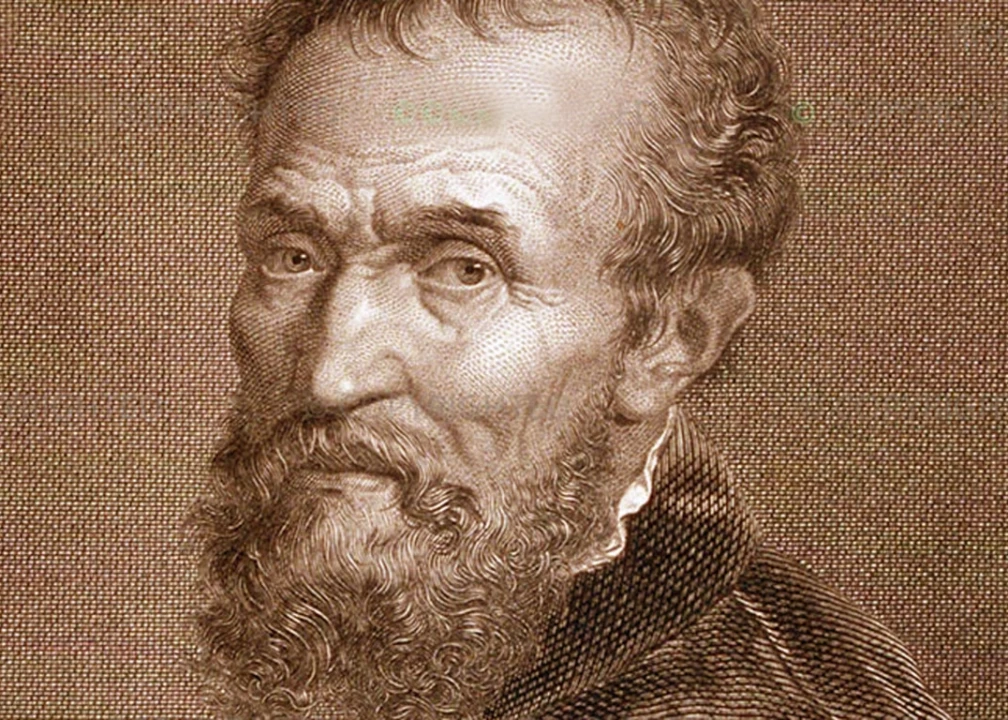When Paolo Sorrentino was searching for the right title for his movie that then would have won the Oscar, he probably thought about Michelangelo. It’s the first name that stands out when someone is dreaming about Italian Art. It’s the first symbol of the splendor and the Italian creative genius. It’s – first of all – in the gestures and works of Michelangelo Buonarroti that the Great Beauty lies.
He was painter, sculptor, architect and poet. He was born in Caprese on March 6th, 1475. He received an artistic education from Domenico Ghirlandaio: at that time a very famous sculptor. His father decided he had to have this training because of the economic situation of their family: and because of the continuous tensions connected to the lack of money, Michelangelo never had a good relationship with his family.
Since when he was young, he created an enormous artistic production that made him famous all over the world but, at the same time, he caused a lot of envy among his colleagues. He was irascible and for this he ended his relations with the most important customers of that time, and this trait modeled the character of an artist as great as troubled and unpredictable.
The Master realized, over the years, hundreds of works: some of them rest in the collective imagination. His artistic consecration happened in 1497, when he realized the Pietà. The sculpture, in Carrara marble, is housed in St. Peter's Basilica in Rome. It’s an extraordinary realistic work that bear his sign. Rumors has it that the work was carved by Michelangelo during the day of the Basilica’s inauguration. The Tuscan Master also carried on others piety: the Rondanini and the Bandini, famous for a technique typical of Michelangelo, known because he sometimes left his work unfinished.
The artist became aware of his talent while he was realizing the David, that is preserved in the Museum of the Academy of Florence. It is narrated that Piero Soderini, a Florentine administrator, told that the statue had a big nose. So, Michelangelo decided to take a gypsum dust and a chisel and he pretended to adjust the nose by let falling the dust on the ground. Soderini was satisfied and declared that the work could be considered perfect.
In 1508, the Pope Julius II - Michelangelo had a complex relationship with him, throughout his whole career - demanded the artist to realize the work that for the rest of the world is the symbol of the genius of the Tuscan Master: the series of frescoes for the Sistine Chapel ceiling. It’s an immense collection of figures with bright colors. The vault represents an impressive number of scenes, including the Creation, with the fingers of God and the man that are stretching and lightly touching. The Chapel is completed by a paint of the Last Judgment, on the bottom, a fresco made by Michelangelo in 1534.
Johann Wolfgang Goethe wrote "Without having seen the Sistine Chapel one can form no appreciable idea of what one man is capable of achieving".
In Rome, the work of Michelangelo also adorns the Piazza del Campidoglio - the current location of the Town Hall; his is also the shining colors design for the uniform of the Swiss Guard, the army of the Vatican City. The current uniform kept the design of the Master.
Michelangelo realized the papal tomb for Julius II. The work ended in 1545, after decades of work and difficult relations with the Pope. Probably this was his most difficult work. Among the statues included in the project Michelangelo put Moses, which ended in 1515. This statue is characterized by an extraordinary expressive force and a powerful realism: Moses is one of the most important sculptures of Michelangelo and it will be an aesthetic reference for the future generations too.
The controversial nature and the restless genius of Michelangelo are present in his words when he was admiring the complete work. In fact, as the story goes, he himself was surprised by the perfection of the lines: so he picked up a hammer, threw it at the statue and shouted "Why don’t you speak ?".
Michelangelo died on February 18th, 1564 in Rome. His remains are preserved in Santa Croce in Florence.
450 years after his death, when someone is admiring the strength and the realism of his works, he or her could say that same expression. Each of us will think that the only flaw of his works is the lack of speech.




